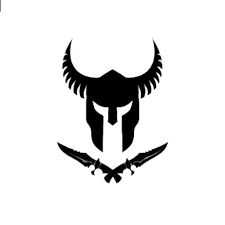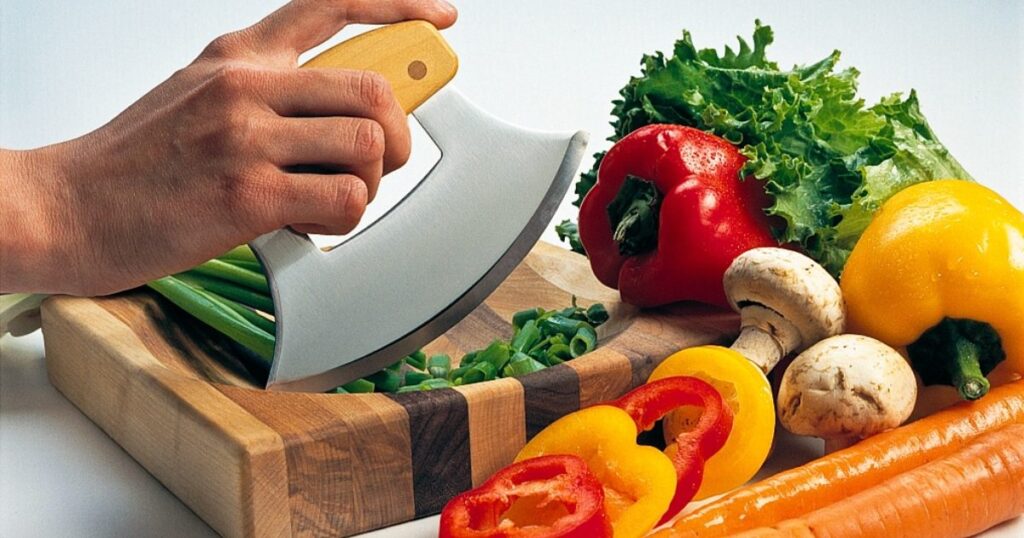Have you ever seen an Ulu knife? It’s a cutting tool used by the Inuits, more commonly known as a rocking knife today, with a rich history in Alaska. This extremely ancient knife design dates back several centuries – 5000 years or more.
Summary
ToggleIn this article, we will delve into the origin of Ulu knives, what they were used for, and if they still exist today! So read on.
What Does Ulu Knife Mean ?
An Ulu knife is a curved knife with Eskimo heritage. Many kitchen tools and knives, including the chef’s knife, slicer, butcher knife, and cleaver, can be used for working with meats. These knives are traditional, but the Ulu knife has a curved and delicate crescent-shaped blade, making it the perfect tool for chopping meats, vegetables, and a variety of other ingredients.
The Beginning and History of the Ulu Knife
Exhibition of Ulu knives at the Royal Museums Greenwich, associated with the Franklin Expedition of 1845.
The Uluaq, dating back to 2500 BC, was created as a cutting tool, especially for unmarried women. Slate blades were used to make these knives, and they used ivory, hard wood, or bone for the handle. Over time, to achieve a better edge, they began making Ulu blades out of copper and iron on slate. These handles are now made from high-quality stainless steel.
Indigenous peoples used this knife for cutting tough meat bones, for skinning animals and fish, for separating fat; all of these tasks were easier with an Ulu knife.
The Eskimos used to shave blocks of ice to make igloos with these knives. They also revered these knives, believing that the souls of their ancestors lived in them. These knives were passed down from generation to generation, and that’s why they took great pride in them.
What Is a Ulu Knife Used For ?
The Ulu knife is used very simply. It has a sturdy handle that allows it to be used with one hand, making it easy for many cooks to handle and satisfying those who prefer to use only one hand for effortless cutting.
Even if you’re not an experienced cook, the Alaskan knife is an incredibly versatile tool that will allow you to immerse yourself in the culinary world. It can glide through ingredients and surfaces with ease, and its curved blade stays sharp and intact for a long time without requiring constant maintenance.
Although it was once used for cleaning animal hides and even cutting hair, today’s top chefs use it to slice and dice vegetables like celery and onions, carve meats like breasts, fish, and chicken, cut large pieces of cheese and pizza, and chop nuts like an expert!
Types of Ulu Knives
Inuit Ulu Knife or Alaskan Ulu Knife
This is the legendary knife of the Arctic. This authentic Alaskan Ulu knife ensures fine cuts and chops. It is made in Alaska and features a 6-inch stainless steel blade and a wooden handle. The handle provides a very comfortable grip. The steel holds its edge well and resists corrosion, making it perfect for various kitchen tasks. You’ll feel the desired control when handling the knife for chopping and slicing. This Alaskan Ulu knife comes with a walnut stand.
Canadian Ulu Knife
The Canadian Ulu knife has a very interesting design. This characteristic design includes a thin stem that serves as a link between the handle and the blade. This knife comes in two models. The more regular triangular-shaped blade is used in western Canada, while the pointed blade is mainly found in the eastern part of the Canadian Arctic.
West Greenland Ulu Knife
This knife features an elliptical blade connected to the handle by a thin stem. The handle is compact and small, unlike the Canadian Ulu knife, and the blade is oval-shaped.
East Greenland Ulu Knife
This Ulu knife is similar to the West Greenland Ulu knife. They have the same design. The blade and handle are connected by a thin stem. However, this knife highlights a large rectangular-shaped blade. The handle is curved and compact.
How to Sharpen an Ulu Knife ?
The only finished edge on an Ulu knife is the one that needs to be cleaned during knife maintenance. You can sharpen an Ulu knife in about 10 minutes using a sharpening stone, but you can also sharpen it without a stone. Here are some simple and safe steps to get a sharp Ulu knife:
- Use a sharpening stone or 400-grit sandpaper (wet or dry) to sharpen the beveled edge of your knife.
- Hold the knife firmly by its wooden handle.
- Apply slight pressure and rotate the blade along the stone or sandpaper.
- If a burr appears during sharpening, use the stone or sandpaper surface to gently remove it without exerting pressure. You can also use a leather strop if you have one.
- Once sharpening is complete, the edge should appear well polished.
A Ulu knife blade is very easy to maintain. Infrequent sharpening is essential to maintain sharpness. For sharpening, use a steel or a hard stone on the beveled side.
Ulu Knife Material
The blade of an Ulu knife was traditionally made of jade, polished slate, copper, ivory, and wood, or bone for the handle.
However, contemporary Ulu knives are made from indestructible aluminized steel. And the handle of the Alaskan model is made of caribou wood. You can also find a model that takes the form of a pair with a breaking plate and a plastic handle.
They are all made from sturdy materials. However, avoid using caribou or ostrich feathers as crafting materials if you are opposed to animal cruelty.
Size of an Ulu Knife :
Normally, the size of an Ulu knife blade generally influences its utility and use. Ultimately, the size reflects the use of an Ulu blade. For example, a Ulu blade with a small edge, say only 2 inches long, is perfect for cutting the ligament that connects muscle to bone.
Centuries ago, a specific small Ulu blade, known as Kimagtuut, was used to create patterns from the skin of creatures like seals and caribou. Essentially, for general chores, a 6-inch model was considered excellent. In fact, even today, this size is considered standard for most models. However, it’s not uncommon to find models around 12 inches.
Today, the best Ulu blade is…

